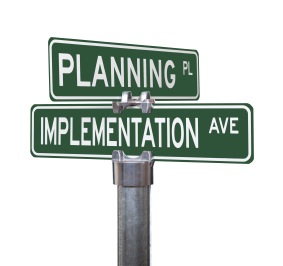 My husband and I began envisioning ourselves in a prepper lifestyle at a point in our lives that looking back, turned out to be the height of our careers. Always knowing we wanted to get out of the rat race of corporate America, and Big Pharma in particular, we planned very carefully. Timing and enough money saved were as important as where we would do this and how it would look when there was no more “corporate sponsorship” coming in. I think we did a great job of planning, and although it turned out that we had to implement our plans eighteen months earlier than we had wanted, we landed on our feet okay. Looking at the tailspin the economy was taking at the time, we honestly couldn’t have delayed things much longer.
My husband and I began envisioning ourselves in a prepper lifestyle at a point in our lives that looking back, turned out to be the height of our careers. Always knowing we wanted to get out of the rat race of corporate America, and Big Pharma in particular, we planned very carefully. Timing and enough money saved were as important as where we would do this and how it would look when there was no more “corporate sponsorship” coming in. I think we did a great job of planning, and although it turned out that we had to implement our plans eighteen months earlier than we had wanted, we landed on our feet okay. Looking at the tailspin the economy was taking at the time, we honestly couldn’t have delayed things much longer.
It taught me a great deal about being prepared. Not at all a planner by nature, I have always been a “fly by the seat of my pants” kind of person. I imagine it is a hangover from the way I was raised. Neither of my parents planned well, and looking back I think they had two things going for them: being in the right place and the right time and there but for the grace of God go I. Honestly, I can’t see how else they got through sometimes.
Everything You Need to Know to Keep Your Family Safe and Secure—No Matter What…
We were determined that as we planned what we hoped was to be the final big plan of our lives, that we did it right and that we were as organized as possible. It also required that we be willing to switch gears and regroup when things that we hadn’t been able to anticipate attempted to throw a monkey wrench into our well-laid plans. I can tell you that today I am a planner. Now I try and plan everything out weeks, months, and still years in advance. I am rigid about some things, and yet, because I am disorganized by nature, when things don’t go according to plan, I don’t lose my sense of humor or my sanity. I can’t say we are 100 percent there yet. But today we can see the light at the end of the tunnel, and that fear of, “Lord, I sure hope it ain’t no train coming,” doesn’t overtake us any longer.
I hope my advice helps you.
Goal Setting 101
Goal setting is an important part of any preparedness plan, and achieving at least some of those goals can, in some cases, mean the difference between life and death. Many people fail to achieve their goals simply because they neglected to plan how to reach them. They plod along in life, taking a step toward their goal here and there, but because they did not take the time and energy, or take into account that literally anything can happen, most end up falling short of reaching their intended goal.
So How Do We Achieve Our Goals?
The answer lies in first knowing specifically how realistic your goals are, and then careful planning of the steps required to achieve them.
A realistic goal must be something that you are capable of achieving. If you are a sixty-year-old with a bum knee and your goal is to be the starting pitcher in the World Series… short of a miracle, things don’t look so good for you. As Clint Eastwood is so fond of saying in many of his movies, “A man’s got to know his limitations.” Yes, this can apply to us women, too!
Setting Your Ultimate Goal
Setting an ultimate goal is visualizing what you want your life to be like down the road. To give you an example, we live in Puerto Rico and bought a farm that used to be one of the largest coffee producers in the area. Growing and, more to the point, harvesting and processing coffee is extremely labor intensive. The return on investment for the farmer just isn’t there, and it requires the use of chemical fertilizer, which we aren’t willing to use. We decided at the end of last year’s harvest, when the trees were too tall to go another year, to cut them all down to nubs and grow something else. Our reasoning is that in fifteen years, we are not going to want to get out there and pick coffee like we can today. We’ll be too tired. So we set a new ultimate goal for ourselves, one that allowed us to be organic. All of our long-term goals, which we’ll talk about in a minute, are in place to meet our ultimate goal.
Only you can decide where you would like to be in the future. If you are working toward someone else’s goal, there is a much greater chance of failure. Take your time and brainstorm; this is your future we are talking about! This is especially important if you are planning with your spouse. It should go without saying that you both need to be on the same page 100 percent of the time. This is not the time to have different individual goals. It won’t work.
Gather Information
When setting your goals, you will need to do some research; the more information you can acquire on a goal you are contemplating, the better. You should search online, in books, and speak to others who have reached or are well on their way to reaching the goal you want. Don’t be afraid to ask a ton of questions. We have found that the farmers where we live are always happy to guide us when we get stuck with anything.
Many preppers make it their goal to be self-sufficient. This is a lovely endeavor, but how is it achievable? For an example, let’s make the ultimate goal “To have a self sufficient organic homestead.” At minimum, you will need to gather information that will include:
- First and foremost, where? Will this be your current location, a new town or even a new country?
- What is the local climate?
- What are the growing zones?
- What grows there naturally?
- If there is a winter, how will you stay warm?
- If there are periods of drought, how will your crops survive?
- What will you grow?
- Are there any noxious weeds?
- What kinds of pests are there?
- Will you have livestock?
- What kinds of predators live nearby?
- What are your fencing options?
- What are the local zoning laws?
- What is the cost of land where you want to live?
- What equipment will you require?
- How will you deal with neighbors?
And these are just scratching the surface. Some of this information will be specific to you and your location; the rest will be general knowledge about homesteading. The specific information is the really important stuff since it will affect you directly while you are working on your goal.
Long-Term Goals
Now that you have set your ultimate goal, the next step is to break it down into smaller long-term goals. These are any large steps you need to take to reach your ultimate goal. And like the name suggests, long-term goals take a long time to achieve. How long can vary, but it will probably be more than a year— at the very least, a season.
In this example, a long-term goal could be “pay off the land for the homestead,” or “change over to animal power and equipment for farming,” or even “create your own climate-specific heirloom vegetables to grow and sell.” Any or all of these could be your long-term goals; you will probably have several once you examine the ultimate goal.
Short-Term Goals
When you get your list of long-term goals, take one and break it down into short-term goals, just like you did with the ultimate goal. These are things you need to do make your long-term goals possible. These goals should be things you can get done in a season or less.
Individual Jobs
Finally break you short-term goals down into jobs. These are specific tasks that need to be done for each goal you set. If your short-term goal was to “grow a plot of sweet corn,” then your tasks would include purchasing seed, preparing the plot (which could include plowing and applying cow or goat manure and lime), planting, weeding, irrigation (if you need it), animal control (many love sweet corn), then harvest and long-term storage.
All of your short-term goals can be broken down in the same way. It is possible to continue down the path of breaking each task down into smaller and smaller units, but much beyond this point you run the risk of over analyzing.
Setting Your Schedule
Now that you have your goals broken down into individual jobs, it is time to sit down with a pencil, a piece of paper, and a calendar to work out a schedule. This is where the real work begins and hopefully will tell you if your goal is realistic for you or not.
Start by separating your jobs into two groups. One group will be one-time tasks. These are jobs that will be done once and they are over with. Building a chicken coop would fall into this category (although you may build another in a few years, but you get the idea). The second group is jobs that are continuous. Feeding the chickens will go into this list. The latter list can further be divided into daily, weekly, and monthly jobs.
After they are separated, give each a time value. This will be your best guess on how long it will take to complete each job. Take group one and start penciling in times on your calendar in a logical order of completion. This is where your research comes in, since you will need to know what time of year the apples bloom and when the last frost will be so your schedule will reflect what actually needs to get done and when.
Now add up the time of your daily jobs. Is this something you can work into the schedule you are already living? If not, are you willing to take something out of your current schedule to meet your goals? If you can’t remove something from your current schedule, you will need to start revising your goals. Be sure to leave realistic time for eating, sleeping, and fun, or you stand the chance of working yourself into an early grave, which completely negates the purpose of our lifestyle.
Do you really want a dairy cow on your homestead? Yes, the milk is great, but the twice-a-day milking, along with the clean up of your equipment, takes a good chunk of your time. Not to mention the extra pasture and fence you will need and then there is the hay for winter to consider. Then you have to store it somewhere, probably in that barn you need to build.
This is why people who don’t plan out their goals usually fail to meet them; they jump in and get half way done and realize the goal is not realistic for them or that it requires something they hadn’t taken into account ahead of time.
Once you are happy with your schedule, congratulations! You now have a realistic goal on paper, along with all the steps needed for the work to get done. You also have a realistic timeframe for when you can expect to achieve it.
Remain Flexible
Just when you think you are set, you should always expect the unexpected. No matter how well prepared you are, life can and will get in the way of reaching your goals.
My grandparents called it a rainy day list – I doubt there’s a more scientific name for it today. These were things to do when weather or other circumstances kept them from working outside. If you can’t meet your schedule for some reason, either change it or work on another portion that can be done at any time.
Track Your Progress
Finally, keep track of your progress toward your goal. If things are going well, you may need to revisit your plans only once a year or so. But if you find yourself missing parts of your schedule with regularity, you will need to sit down and decide if you have set a realistic goal to begin with.
You also need inspiration. If you are able to look out at your homestead and see the progress that can only be the result of such great planning, you give yourself a pat on the back! Now that you are completely self-directed and motivated, you need those little “wins” to make this all seem worth it. This is especially important when naysayers (and we all have them, don’t we?) question your lifestyle. Although you aren’t doing this for them, you do need to feel that sense of pride that you are on the right track.
Setting realistic goals can take considerable planning, but if you are honest with yourself about your own capabilities and motivations, sticking to your schedule will put you on the fast track to your goal.
©2012 Off the Grid News











